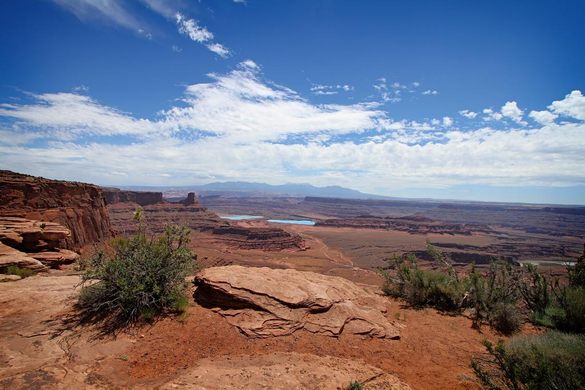AO Edited
Potash Evaporation Ponds
Few things look more out of place than the electric blue ponds in the reddish-brown desert of Utah.
In order to extract potassium chloride, also known as potash, from the desert landscapes of Utah, Intrepid Potash, Inc. uses a series of evaporation pools whose dazzlingly blue waters lie in stark contrast to the red desert surrounding them.
Intrepid Potash, Inc. operates three potash mines in the United States, with one in New Mexico and two in Utah. The most famous and most photographed of these locations is in Moab, Utah, where the electric blue potash evaporation ponds provide a psychedelic sight in the otherwise reddish desert.
At the Moab mine, miners pump water from the Colorado River deep underground to reach the potash ore, which lies about 3,900 feet (1,200 meters) below the surface. The water dissolves the soluble potash into a brine, which is then pumped into underground caverns. Once it is fully dissolved, the potash brine is pumped to one of the evaporation ponds. And this is when things get trippy.
The water in the evaporation ponds is dyed bright blue to help it absorb more sunlight and heat. This reduces the time it takes for the potash to crystallize, at which point in can be removed and processed for use as fertilizer. The evaporation process at the Moab ponds takes about 300 days, and the mine produces between 700 and 1,000 tons of potash per day.
As the evaporation process takes place, the ponds change color. At times, most of the ponds are a vibrant electric blue. Sometimes, however, the ponds display a range of colors, creating a rainbow of blues alongside strips of turquoise, orange, yellow and white, indicating different stages of evaporation. Either way, it’s quite a sight, the ponds creating an otherworldly landscape along the banks of the Colorado River.
Know Before You Go
The Moab potash mine and evaporation ponds are located about 10 miles southwest of Moab in southeastern Utah. They are also located in between Arches National Park to the north and Canyonlands National Park to the southwest. You can get good views of the ponds from State Route 279, also known as Potash Scenic Byway or Potash Road, which follows the Colorado River. The ponds are 21 miles off of route 191. The ponds are active year-round, but the evaporation process is most intense in the summer, providing a greater range of colors.

























Follow us on Twitter to get the latest on the world's hidden wonders.
Like us on Facebook to get the latest on the world's hidden wonders.
Follow us on Twitter Like us on Facebook